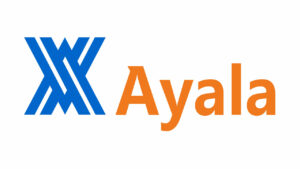Job quality likely to worsen amid soaring inflation — economists

By Keisha B. Ta-asan
THE UNDEREMPLOYMENT rate in the country may continue to deteriorate in the coming months as workers may demand higher salaries in response to rising prices, economists said.
Asian Institute of Management economist John Paolo R. Rivera in a Viber message said inflation, which accelerated to 6.9% in September, may prompt more workers to demand higher wages.
“If firms cannot cope with this, they might reduce manpower resulting to higher unemployment but workers will look for other means of livelihood even if it’s below their scope. This will slow down growth trajectory as the workforce is not fully maximized,” Mr. Rivera said.
In August, the underemployment rate, or the share of those already working but still looking for more work or longer working hours to the total employed population, increased to 14.7% from 13.8% in July.
This was the highest underemployment rate in five months, or since 15.8% in March. In absolute terms, the number of underemployed Filipinos reached 7.031 million, up by 488,000 from 6.543 million in July.
“With the numbers, we think that many are already feeling the pinch of higher inflation and may weigh down on the country’s economic growth prospects in the medium term,” UnionBank of the Philippines, Inc. Chief Economist Ruben Carlo O. Asuncion said in a Viber message.
Mr. Asuncion noted rising inflation slashed broad purchasing power and “raised the urgency for people to look for work and augment family incomes.”
“Despite the availability of jobs, we suspect the high job dissatisfaction among workers (as seen in the rising underemployment rate) can be traced to higher wage demands as inflation went in a surge,” he added.
Mr. Asuncion also noted the increase in jobseekers as seen in the higher labor force participation rate.
The size of the total labor force in August was estimated at 50.551 million in August, up by 557,000 from 49.994 million in July. This translated to a labor force participation rate — the share of labor force to the total population 15 years old and over — to 66.1%, higher than the 65.2% seen in July.
Despite the daily minimum wage hike in June and July, the prices of goods and services grew at a faster pace, Rizal Commercial Banking Corp. Chief Economist Michael L. Ricafort said.
“Thus, given limited incomes/budgets especially by the poor, they may have to tighten their belts further or could even borrow due to higher prices/inflation… The hardest hit sectors by higher inflation are the poor, in view of the limited incomes/budgets and skewed more on basic necessities such as food, shelter, utilities, transportation,” he said.
Bangko Sentral ng Pilipinas (BSP) Deputy Governor Francisco G. Dakila, Jr. said achieving a target consistent path of inflation and ensuring price stability remains the central bank’s primary concern.
“Our analysis of the situation showed us that we could increase interest rates to help bring down inflation without unduly hurting the nascent recovery in domestic demand,” Mr. Dakila said in a speech during the general meeting hosted by the Philippine Marketing Association last week.
The BSP has raised interest rates by a total of 225 bps since May, bringing the benchmark policy rate to 4.25%.
The BSP also raised its inflation forecasts to 5.6% from 5.4% for this year and to 4.1%, from 4% previously, for next year.
“We are looking carefully at these trends because we do not want inflation to gain momentum. And in terms of that, we’re looking at so-called second-round effects and we have some examples of this in that we have already seen wage and transport fare hike adjustments,” Mr. Dakila said.
Fares for public utility vehicles increased earlier this month.
“Given elevated uncertainty and the predominance of upside risks to the inflation environment, (the BSP) recognizes the need for follow-through action to anchor inflation expectations and prevent price pressures from becoming further entrenched,” Mr. Dakila said.
The Monetary Board’s next policy review meetings are on Nov. 17 and Dec. 15. — with inputs from Diego Gabriel C. Robles




